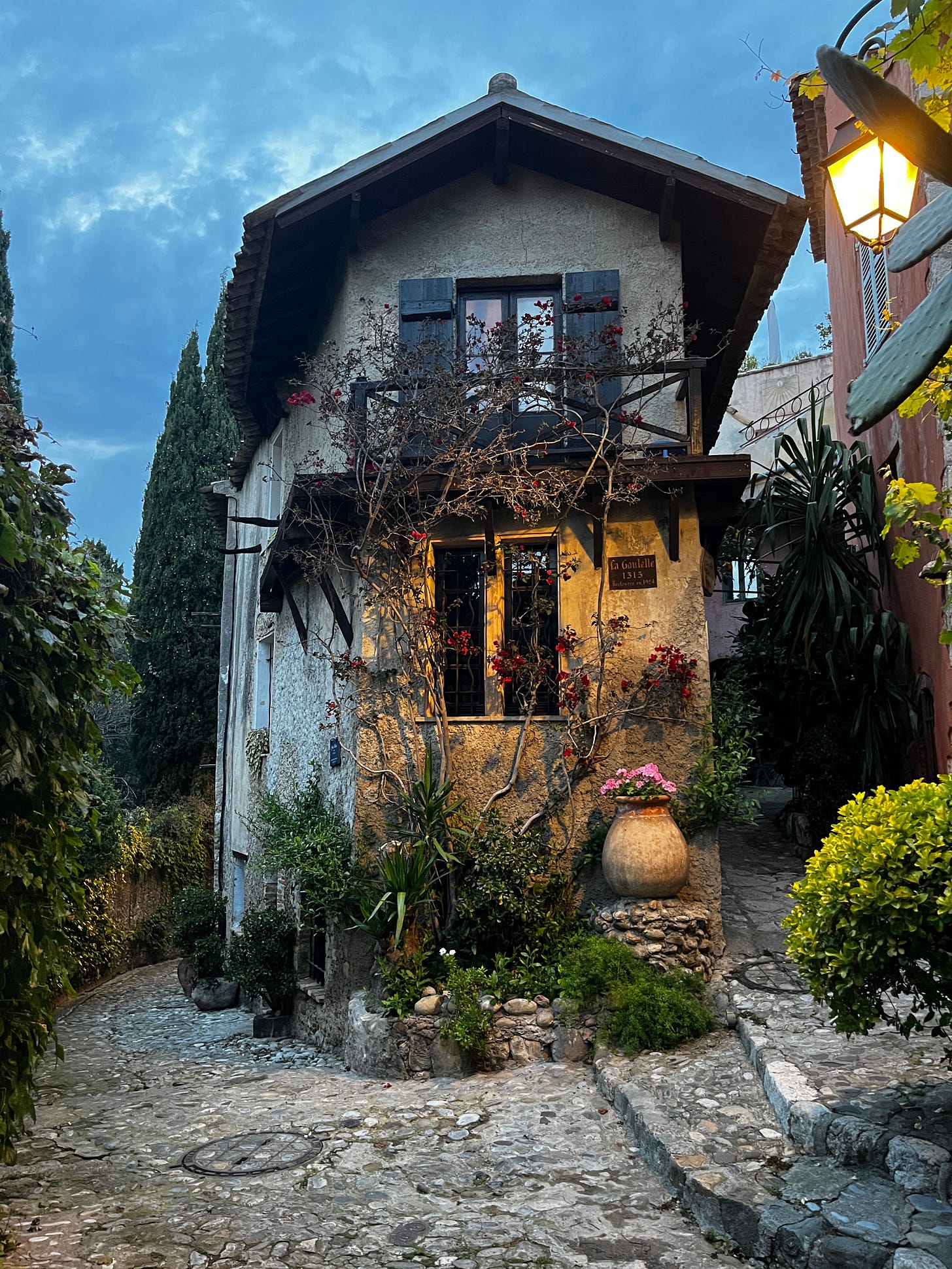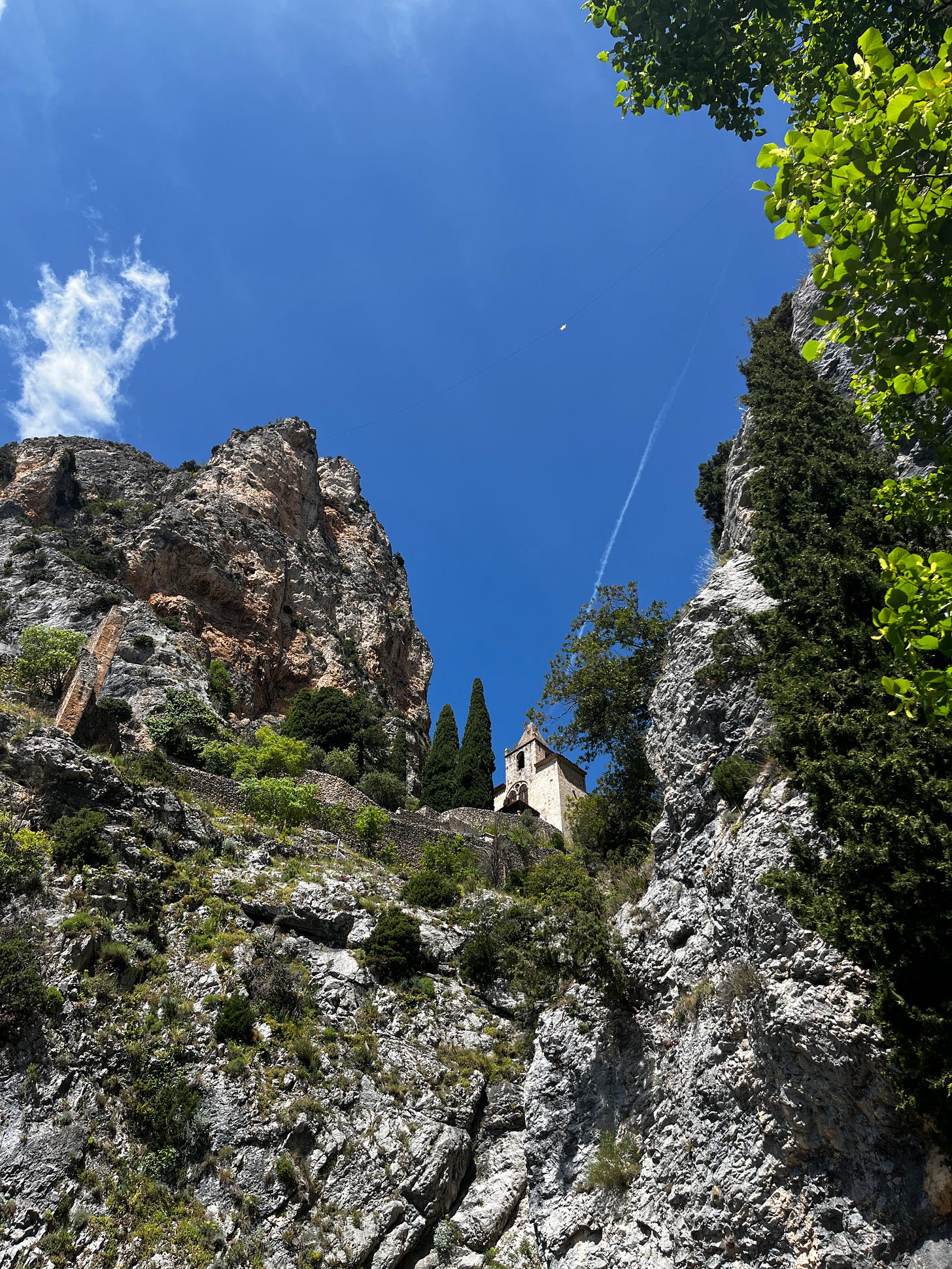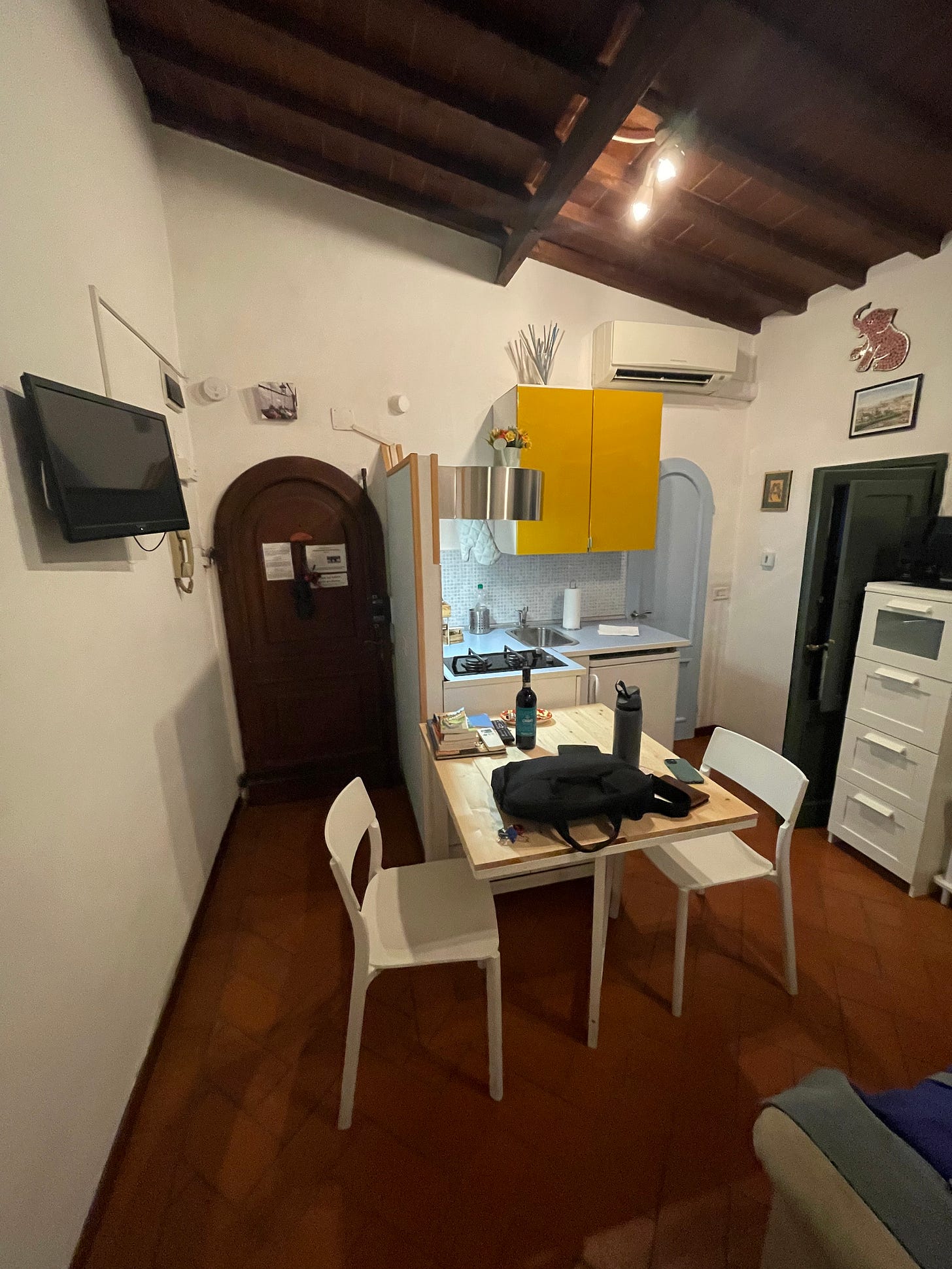What the Place Might Hold
On a recent trip to Italy and France, I was taken with the ways in which places stayed and visited can hold pieces of past and how that past can fold toward present.
In the brief, exalted moments when she could picture the grand cinema of the forest's passage, she felt like nothing less than a clairvoyant with a crystal ball.
- North Woods, by Daniel Mason
The first residence is up four flights of stairs. Up three steps, turn left. Up three steps, turn left. Up three steps, turn left; again, again again; legs burning, heart pumping, sweat spilling, etc. until eventually arriving at the top floor. The one on the left. Arched wooden door. Two-part lock, the first requiring four twists of the key, the other three. Inside is tight, but neat. Kitchen and couch in the first room, bed and wardrobe in the next. Both with windows; bedroom facing west, kitchen south. The bathroom, off the kitchen, no more than 26 square feet, a toilet smack dab in the middle of a standing shower. How many others, lung burning and head sweaty, have came through this door?
The one where the local visited resides is on the estate of Leonardo Da Vinci’s teacher and artist himself, Andrea del Verrocchio, who lived there in the 1460’s or so. Nick, the artist friend now living there, purchased his portion in the late 50’s, early 60’s of the 1900’s. Two painter/teacher occupants, 500 years between occupancy. Casual, Florentine. The estate dates back to the 1100’s. Standing on Nick’s balcony, you can see the city of Florence 8 miles away. He notes that if you look directly over the top of the Cathedral of Santa Maria del Fiore to the north, and let your eye go further into the hills beyond, you’ll see where his daughter lives. Other daughter is west, son to the east. Where in these fields surrounding did those kids laugh and sing with no context of the horizon they would one day litter?

The one in Rome is a renovation. A who-knows-what converted into the New York Times top pick for an affordable stay. A hostel with individual room options that is “so cool”, it plays two types of top-40 remixes at once, depending on the room. So that if you happen to be in the lounge space between lobby and bar trying to read, the songs merge into one sound vortex of synth and beat so dizzying that the words on the pages of your book wake up, glare at you, pack up their suitcases and wander off the page in search of a new context to be appreciated. Before the speakers, what words were uttered here?
The last one is in a pedestrian only village overlooking the Cote d’Azur (French Riviera). Its winding walkways, arches, and tunnels sit at the top of a hill. It dates back to the 14th century. In the shadow of the castle tower at the top of the village is the town square, home to two bocce ball courts, four restaurants, dogs ranging from Bassett Hound to Samoyed, and lots of cigarette smoke. Those sharing this space on an early May evening have a view of the countryside to the west. This view displays the French alps, the homes littering the smaller hills that come before them, and cars traversing below. To the east, if the view were not hindered by the old battlement and village buildings, the Mediterranean would sprawl itself out infinitely. What other social comings and goings have made home here?

The one that was left had the most manicured lawn it had known in the years of its current occupant. The one that was returned to was overgrown. Grass beyond shaggy. My grandmother used to ask me, when I grew out some stubble on my face, if Gillette had gone on strike. Had she seen the yard, she’d think Lowe’s, Home Depot, and all other purveyors of lawncare machinery had filed for Chapter 11.
But still, and obviously, prior to any sort of maintenance, I lay and read in the hammock amidst the long grass. With curious robin inpsecting and first spring butterflies bouncing on the wind.
If we were to mingle with the ghosts of our environs, what would they say? How would we witness the places we pass through? How does the multiplicity contained within location speak and bubble when time is allowed to melt and merge?
Staying and visiting homes in Florence, Rome, Haute de Cagnes and walking through miles of other space and context these past few weeks in Italy and France, I had moments where my brain and my body and my spirit softly tried to sink into pasts that were birthing into the present.
On the grounds of Nick’s home, where are da Vinci and Vercocchio walking? What are they conveying to one another?
Who is standing in line outside the Coliseum 2000 or so years ago feeling the same giddiness I had as a kid walking up and toward the doors of Joe Lewis Arena before a Red Wings game?
As I make the grueling trek up the side of the mountain looming above Moustiers Sainte-Marie to the chapel initially built in the 5th century, what are the footsteps beside mine of individuals from over a 1000 years ago making the trek for? What are they holding onto that this suffering is worth the penance? How do their prayers, whispered through exhausted breath, remain in the rock and the wind? How do the chants around the flames of the rock outcroppings walked past on this trek, home to ancient peoples 42,000 years ago, mix and merge with those prayers, my heavy breathing, and the song of the Eurasian blackcap coming from the trees above?

Sound and foot interact with rock and wood. Land and structure hold memory. Tears from loss and spit from laughter and sweat from sex; place contains the remnants of past long after the us of the place is no longer.
If all I can keep is now, now has whirled itself into existence because of all the other nows that had been kept. And so, with careful attentiveness mixed with (mysteriously and somehow) strategic withdrawal, I slip, and I am caught by the grasp of a lineage that is always building a presence.




